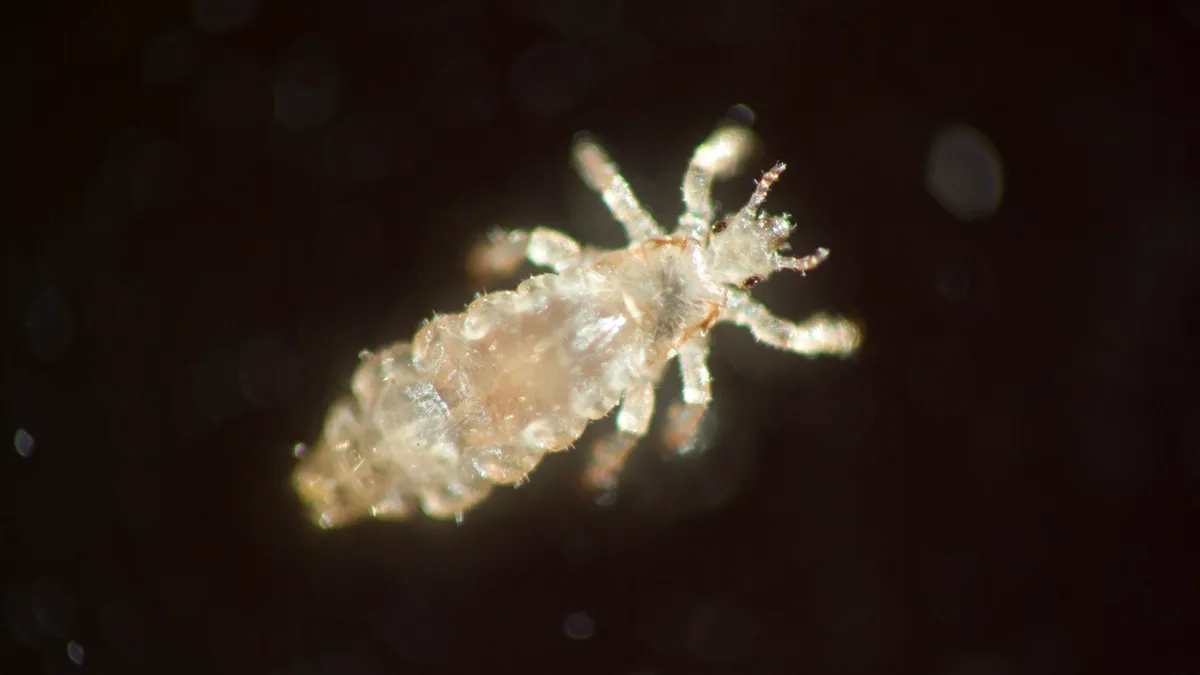Dive Insight:
- Schools should not send students home or keep them away from school due to a case of head lice — the annoying but not dangerous tiny, wingless insects that feed off the blood in the human scalp. In fact, "no-nit" policies that forbid an infected student from returning to school could violate students' civil liberties and create psychological stress, according to guidance from the American Academy of Pediatrics released Sept. 26.
- When cases of head lice are identified in schools, AAP advises confidentiality due to the stigma that having head lice can bring to a student and family. The infected child's caregivers should be notified by phone or through a note sent home with the student at the end of the school day with recommendations for prompt and proper treatment.
- Head lice screening programs in schools have not been proven to reduce the incidence of head lice in schools, are not cost-effective, and may stigmatize children suspected of having head lice, the AAP guidance said. Instead, schools should increase understanding and management in the community, including communicating that head lice is not a public health hazard, an indication of poor health or responsible for spreading any disease.
Dive Insight:
The AAP guidance, an update from 2015, aligns with recommendations from the Centers for Disease Control and Prevention and the National Association of School Nurses. Previous AAP guidance also discouraged the exclusion of infected children from school, but the new recommendations share newer, safer topical treatments and describe the drawbacks of certain school head lice policies.
For instance, the guidance states the efficacy is unknown for classroom alert letters regarding head lice cases, while some experts say these letters could violate privacy laws and cause unnecessary public alarm.
Still, the guidance said, some schools design communications guidelines that best meet the needs of their student population with the understanding that — although a head lice infestation may not pose a public health risk — acknowledging the situation may be viewed as helpful public relations for the school.
The academy recommended school personnel familiar with head lice consider checking for lice in an infected child's close contacts, but said routine or schoolwide screening is unnecessary. “Common sense and calm should prevail within a school when deciding how 'contagious' an individual may be," the guidance said.
“Head lice are an unpleasant part of the human experience, but they can be successfully managed and are no reason for a child to miss school,” Dawn Nolt, lead author of the report, said in a statement. The report was published by the AAP Committee on Infectious Diseases, Committee on Practice and Ambulatory Medicine, and Section on Dermatology.
There is typically four to six weeks between when a head lice infestation begins for a person and when they start itching due to an allergic reaction to lice saliva. Because of the length of exposure and little risk to others from the infestation, a student should remain in class but be discouraged from close, direct head contact with others, the guidance said.
While trained school staff may be able to identify cases of head lice, treatments are typically done at home. Treatment costs in the United States have been estimated at $500 million annually, according to AAP.
The National Association of School Nurses doesn't have data on the number of cases of head lice identified in schools, said President Linda Mendonca, but because of an end to COVID-19-related school closures, quarantines and social distancing, nurses are expecting to see more cases of head lice compared to the last few school years.












